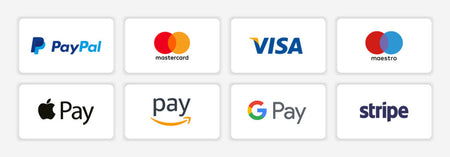Descrição
How to include a computer course on your resume
Having computer skills is essential these days, regardless of your field of work. Technology is present in practically every sector, and having skills in this area can make a difference when searching for professional opportunities. In this blog, we will show you how to include a computer course on your resume efficiently.
1. Highlight the computer course
To begin, it is important to highlight the computer course on your resume. Use the tag to emphasize this information. For example:
Computer Course: Name of the course, institution where it was taken, duration.
2. Describe the skills acquired
In addition to mentioning the course, it is essential to describe the skills you acquired during the learning process. Use the
tag to create a paragraph and briefly explain the skills developed. For example:Skills acquired: Advanced knowledge of the Office package (Word, Excel, PowerPoint), programming skills, familiarity with Windows and Linux operating systems.
3. Organize the information into topics
To make it easier to read and highlight relevant information, use the
tag to create topics. For example:Main skills:
- Advanced knowledge of the Office package
- Basic programming skills
- Familiarity with Windows and Linux operating systems
Complementary courses:
- Name of complementary course 1 - Institution - Year
- Name of complementary course 2 - Institution - Year
4. Use tables to highlight certifications
If you have certifications related to IT, use tables to highlight them. Use the tags
, , , ,| , | |||||||||
|---|---|---|---|---|---|---|---|---|---|
to create the table. For example:
Remember to adapt the information according to your resume and experience. Including the computer course in a clear and organized way can make a difference when it comes to landing a professional opportunity. Good luck! What is a computer course like and how to include it on your resumeIf you are looking for a new job opportunity or want to stand out in the job market, having computer skills is essential these days. In this blog, we will talk about what a computer course is like and how you can include it on your resume to increase your chances of professional success. What is a computer course?A computer course is a training course that aims to train students in various areas related to information technology. During the course, students learn everything from basic computer skills to programming, computer networks, databases, and other topics. There are different types of computer courses, from the most basic, aimed at those starting from scratch, to the most advanced, aimed at professionals who want to specialize in a specific area. Benefits of taking a computer courseInvesting in a computer course brings several benefits to your career. Here are some of them:
How to include a computer course on your resumeNow that you understand the importance of a computer course, it's time to learn how to include it on your resume. Here are some tips:
Remember to adapt your resume according to the position you are applying for, highlighting the most relevant skills and experiences for the desired position. SERP features related to the computer courseIn addition to including the computer course on your resume, it is It is also important to pay attention to the SERP features related to the subject. Here are some of them:
These SERP features can provide additional and relevant information about the computer science course, helping you make more informed decisions about your training and career. In short, the computer science course is an essential training nowadays, which can bring countless benefits to your career. By including it in your resume and paying attention to SERP features related to the subject, you will stand out in the job market and increase your chances of professional success. We hope this blog has been useful to you. If you have any questions or suggestions, leave your comment below. Good luck on your journey in the IT field! What is an IT course and how to include it on your resumeHaving knowledge in IT is essential these days, both for the job market and for personal use. Therefore, many people choose to take an IT course to acquire skills in this area. In this article, we will explain what an IT course is and how you can highlight it in your resume. your resume. What is a computer course?A computer course is a training course that aims to train students in various areas related to information technology. These courses can cover everything from basic computer skills, such as using programs and operating systems, to more specific areas, such as programming, graphic design and computer networks. There are various types of computer courses, from in-person courses, taught in schools and educational institutions, to online courses, which allow students to study at their own pace and from anywhere. In addition, there are also free and paid courses, with different course lengths and levels of depth. How to include a computer course on your resume?Having a computer course can be a differentiator when looking for a job, especially in areas that require technical knowledge in the technology area. To highlight this course on your resume, follow the tips below:
In addition to including the computer science course on your resume, it is also important to demonstrate your skills in the area during the selection process. If possible, put together a portfolio with projects that you completed during the course or create a profile on platforms such as GitHub, where you can share your projects and contributions. In short, a computer science course is a training course that qualifies students in various areas related to information technology. To highlight this course on your resume, include it in the academic background section, highlight the skills acquired, mention certifications and practical experience. Also remember to demonstrate your skills during the selection process. We hope this article has been useful for you to understand what a computer science course is and how to include it on your resume. If you have any questions or suggestions, leave them in the comments! References: Sitelinks: Not available Reviews: Not available People also ask: Not available Knowledge panel: Not available FAQ: Not available available Top stories: Not available Recipes: Not available Find results on: Not available See results about: Not available Related searches: Not available What is the best computer course to put on your resume?When it comes to adding a computer course to your resume, ric, it is important to choose the one that best fits your needs and professional goals. With so many options available, it can be difficult to decide which course is best for you. In this article, we will explore some popular options and discuss the benefits of each. Featured Computer CoursesThere are several computer courses available, but some stand out for the quality of their content and recognition in the market. See below for some options:
Benefits of adding a computer course to your resumeAdding a computer course to your resume can bring several benefits to your career. Some of them include:
SitelinksSitelinks are additional links that appear below the main result on a search results page. They provide quick access to relevant internal pages on the website. When adding an IT course to your resume, you can include links to the course website, making it easy to access additional information about the program. ReviewsBefore choosing an IT course, it is always a good idea to check the reviews of other students. Reviews can provide insight into the quality of the course, the experience of the instructors, and the support offered. Look for reliable review sites and read other students’ opinions before making your decision. People also askOne of the most common SERP features is the “People also ask” section. This section displays questions related to your search term. When researching computer science courses, you may come across questions like “What is the best programming course?” or “How long does it take to complete a web design course?” These questions can provide additional information and help you make your decision. Knowledge panelA knowledge panel is a SERP feature that displays additional information about a specific topic. When researching computer science courses, you may find a knowledge panel with information about the different types of courses available, the skills acquired in each of them and the most renowned educational institutions in the area. FAQThe frequently asked questions (FAQ) section is a great way to provide additional information about the computer science course you are adding to your resume. In this section, you can answer questions like “What are the requirements to enroll in the course?” or “How long is the course?” This helps to clarify questions for recruiters and demonstrates your knowledge of the subject. Related searchesThe “Related searches” section displays search terms related to the topic you’re searching for. When searching for computer science courses, you might come across terms like “best programming courses” or “online computer science courses.” These related searches can provide additional insights and help you in your search. Ultimately, the best computer science course to put on your resume is the one that meets your needs and career goals. Do your research, read reviews, check out the available options, and choose the course that best aligns with your goals. Remember to add relevant information to your resume, highlighting your skills and knowledge acquired during the course. What is a computer course for and how to include it on your resumeWe currently live in a digital age where technology is present in practically every area of our lives. In this context, having basic computer knowledge has become essential to stand out in the job market. In this article, we will explore the importance of a computer course and how to include it efficiently on your resume. Why take a computer course?A computer course offers a series of benefits for professionals in all areas. Here are some reasons why it is worth investing in this training:
How to include a computer course on your resume?Now that you understand the importance of a computer course, it's time to learn how to include it efficiently on your resume. Check out some tips:
In addition, it is important to adapt your resume according to the desired position. If the desired position requires skills, specific skills in certain software or programming languages, be sure to highlight these skills on your resume. In short, a computer science course is essential nowadays, regardless of the area of activity. By strategically including it in your CV, you increase your chances of standing out in the job market and gaining the best opportunities. References:
Related items:
Watch the video below to learn more about the importance of the IT course: Who can take the IT course and how to include it on their CVHaving knowledge in computer science is essential these days, regardless of the area of activity. Technology is present in practically all sectors, and knowing how to use digital tools is a differentiator in the job market. In this article, we will talk about who can take a computer course and how to include it in the curriculum. Who can take a computer course?A computer course is suitable for anyone who wants to acquire basic or advanced knowledge in the area. There are no restrictions on age, academic background or professional experience. From students looking to improve their skills to professionals who want to update themselves, everyone can benefit from a computer course. In addition, companies can also invest in IT training for their employees, aiming to improve productivity and efficiency in the use of technological tools. How to include the IT course in your resume?To include a computer course on your resume, it is important to highlight the skills acquired and how they can contribute to the desired position. Here are some tips:
Remember to adapt your resume according to the desired position, highlighting the most relevant skills for the position. Additionally, it is important to mention the computer science course in a specific section of "Courses" or "Complementary Training". SERP Features:When researching who can take and how to include a computer course in their resume, you may find some relevant SERP features:
In short, anyone can take an IT course and include it on their resume. It is important to highlight the skills acquired and adapt the resume according to the desired position. Use the SERP features mentioned above to get more information and tips on the subject. How long does a computer course last?If you are considering including a computer course in your resume, it is important to know how long it will take to complete the course. In this article, we will explore the average length of a computer course and how you can make the most of this experience. Average length of a computer courseThe length of a computer course can vary depending on the level of knowledge you want to acquire. There are basic, intermediate and advanced courses, each with a different workload. A basic computer course usually has an average length of 40 to 60 hours. In this type of course, you will learn basic computer concepts, such as browsing the internet, using text editing programs and spreadsheets, and digital security. An intermediate computer course can last from 80 to 120 hours. In this type of course, you will deepen your knowledge in specific programs, such as Photoshop, advanced Excel, basic programming, among others. Finally, an advanced computer course can last from 120 to 200 hours. In this type of course, you will learn more advanced skills, such as programming in specific languages, web development, databases, among others. Benefits of including a computer course on your resumeHaving computer knowledge is essential today, regardless of the area in which you work. Including a computer course on your resume can bring several benefits, such as:
SitelinksSitelinks are additional links that appear below a website's main result in search results. They provide quick access to relevant internal pages on the website. In the case of a computer course, sitelinks can direct to specific pages, such as "Basic Courses", "Intermediate Courses" and "Advanced Courses". ReviewsReviews are evaluations made by students who have already taken the computer course. They can be found on specialized websites or on online course platforms. Reading reviews can help you choose the best course for your needs and expectations. People also ask"People also ask" are frequently asked questions related to the topic searched. In the case of a computer course, some common questions might be: "What are the prerequisites for taking a computer course?", "How much does a computer course cost?" and "What are the online course options?". Knowledge panelThe knowledge panel is an information box that appears on the right side of the search results. It provides quick and relevant information about the topic searched. In the case of a computer course, the knowledge panel can show information such as the average course length, recognized educational institutions and available certifications. FAQThe FAQ (Frequently Asked Questions) section is an important part of a computer course website or page. It gathers the most frequently asked questions from students and provides clear and objective answers. The FAQ section may address issues such as course duration, syllabus, teaching methodology, among others. Top storiesTop stories are recent and relevant news about the researched topic. In the case of a computer course, top stories may include information about new technologies, job market trends, and tips for improving your computer skills. RecipesRecipes are recipes related to the researched topic. In the context of a computer course, recipes may be step-by-step tutorials on how to perform certain tasks or use certain programs. Find results on"Find results on" is a feature that allows the user to find search results on a specific platform. In the case of a computer course, you can use "Find results on" to find courses available on online teaching platforms, such as Udemy, Coursera, among others. See results about"See results about" is a feature that shows search results related to the topic searched. In the case of a computer course, you can use "See results about" to find additional information on the subject, such as articles, videos and discussion forums. Related searchesRelated searches are searches related to the topic searched. In the case of a computer course, some related searches may be: "Best computer courses", "How to choose a computer course" and "Free computer courses". In summary, a computer course can have an average duration of 40 to 200 hours, depending on the level of knowledge desired. Including a computer course on your resume can bring several benefits, such as competitiveness in the job market and better professional performance. In addition, it is important to take advantage of SERP features, such as sitelinks, reviews, people also ask, knowledge panel, FAQ, top stories, recipes, find results on, see results about and related searches, to obtain relevant and complete information on the subject. How much does a computer course cost and how to include it on your resume?If you are interested in improving your computer skills and If you want to include this knowledge on your resume, this article is for you. Let’s discuss how much a computer course costs and how you can highlight this qualification on your resume. How much does a computer course cost?The cost of a computer course can vary depending on several factors, such as the length of the course, the level of specialization, and the educational institution. There are free options available, such as online tutorials and educational videos, that can help you learn basic computer concepts. However, if you want to earn a recognized certificate and deepen your knowledge, you may need to invest in a paid course. Prices can range from |
Estimar frete
Payment & Security

Featured collection





















![Curso de Angular e NodeJS - O Guia da Pilha MEAN [Edição 2023] - IBRATH Instituto Brasileiro de Terapias Holísticas teste011020230809](http://enciclopedia.paginasdabiblia.com/cdn/shop/products/a19556.png?v=1699935448&width=1024)




![Curso de Docker & Kubernetes: O Guia Prático [Edição 2023] - IBRATH Instituto Brasileiro de Terapias Holísticas teste011020230809](http://enciclopedia.paginasdabiblia.com/cdn/shop/products/a19570.png?v=1699935525&width=1024)





















Dúvidas Gerais
Após a confirmação do pagamento, você receberá um e-mail com todas as instruções para acessar seus cursos. O e-mail incluirá um link para a plataforma de ensino, onde você poderá fazer login utilizando suas credenciais cadastradas no momento da compra. Caso seja um curso em formato de arquivo para download, o mesmo estará disponível na área do aluno e poderá ser acessado diretamente pelo link enviado. Se você não receber o e-mail de acesso em até 24 horas, verifique sua caixa de spam ou entre em contato com nossa equipe pelo e-mail suporte@amentil.com.br.
Após a confirmação do pagamento, seu pedido será processado e enviado para o endereço cadastrado. Você receberá um e-mail com os detalhes do envio, incluindo o código de rastreamento para acompanhar a entrega. Trabalhamos com transportadoras confiáveis e os prazos variam de acordo com o método de envio escolhido e sua localização. É importante garantir que o endereço de entrega esteja correto para evitar atrasos. Caso tenha dúvidas ou problemas com a entrega, nossa equipe de suporte está à disposição pelo e-mail suporte@amentil.com.br.
Você pode tirar dúvidas diretamente com nossa equipe de suporte por diversos canais:
- E-mail: Envie sua pergunta para suporte@amentil.com.br, e nossa equipe responderá em até 2 dias úteis.
- Telefone: Ligue para +55 (48) 1234-5678, disponível de segunda a sexta, das 9h às 18h.
- WhatsApp: Envie uma mensagem para +55 (48) 91265-4321 e receba atendimento rápido e prático.
- Formulário de Contato: Preencha o formulário disponível em nosso site na página Contato.
- Redes Sociais: Você também pode enviar suas dúvidas pelo Instagram ou Facebook em @amentil.sa.
Estamos sempre prontos para ajudar!
Reembolso e garantias
O prazo de reembolso pode variar dependendo da forma de pagamento utilizada:
- Cartão de Crédito: O estorno será realizado em até 7 dias úteis após a aprovação do reembolso, mas o crédito poderá aparecer na sua fatura em um prazo de 30 a 60 dias, conforme a política da operadora do cartão.
- Boleto Bancário ou Transferência: O valor será devolvido via depósito em conta bancária em até 7 dias úteis após a aprovação do reembolso.
Você pode solicitar a devolução de produtos físicos seguindo o passo a passo abaixo:
- Entre em contato com nosso suporte:
- Aguarde nossa resposta:
Nossa equipe analisará sua solicitação em até 3 dias úteis e fornecerá as instruções detalhadas para a devolução. - Prepare o produto:
- Envie o produto:
- Reembolso ou troca:
Nosso compromisso é fornecer uma experiência confiável e segura ao acessar nossa enciclopédia online. Garantimos a qualidade dos serviços e funcionalidades oferecidos, seguindo as condições descritas abaixo:
1. Garantia de Acesso
- Disponibilidade: Oferecemos garantia de disponibilidade da enciclopédia online 24 horas por dia, 7 dias por semana, exceto durante períodos programados de manutenção ou por problemas técnicos fora do nosso controle.
- Resolução de Problemas: Em caso de interrupções no serviço, nossa equipe técnica atuará para restaurar o acesso no menor tempo possível.
2. Garantia de Conteúdo
- Precisão e Atualização: Todo o conteúdo disponibilizado é cuidadosamente revisado para garantir precisão e relevância. No entanto, a enciclopédia online é constantemente atualizada, e não podemos garantir a exatidão absoluta em casos de informações sujeitas a mudanças rápidas.
- Correção de Erros: Caso identifique erros ou inconsistências no conteúdo, você pode nos informar pelo e-mail conteudo@amentil.com.br, e faremos a análise e correção, se necessário.
3. Garantia de Segurança
- Proteção de Dados: Utilizamos tecnologias avançadas para proteger suas informações pessoais e garantir que sua navegação na enciclopédia seja segura.
- Privacidade: Todos os dados coletados seguem as diretrizes da nossa Política de Privacidade.
4. Garantia de Reembolso
Para assinaturas da enciclopédia online:
- Direito de Arrependimento: Você pode solicitar o cancelamento e reembolso integral em até 7 dias corridos após a compra, desde que não tenha acessado conteúdos pagos da plataforma.
- Problemas Técnicos: Caso não consiga acessar os conteúdos devido a falhas técnicas imputáveis à plataforma, garantimos suporte prioritário e, se o problema não for resolvido, você pode solicitar reembolso proporcional ao período não utilizado.
5. Limitações
- Conexão à Internet: Não garantimos acesso à enciclopédia em situações de instabilidade ou falhas na conexão de internet do usuário.
- Uso Indevido: O acesso e uso da enciclopédia são pessoais e intransferíveis. O compartilhamento de credenciais pode resultar na suspensão ou cancelamento da assinatura sem reembolso.
6. Contato para Garantias
Caso precise de suporte ou queira exercer algum direito de garantia, entre em contato conosco:
- E-mail: suporte@amentil.com.br
- Telefone: +55 (48) 1234-5678
- Horário de atendimento: Segunda a sexta, das 9h às 18h.



